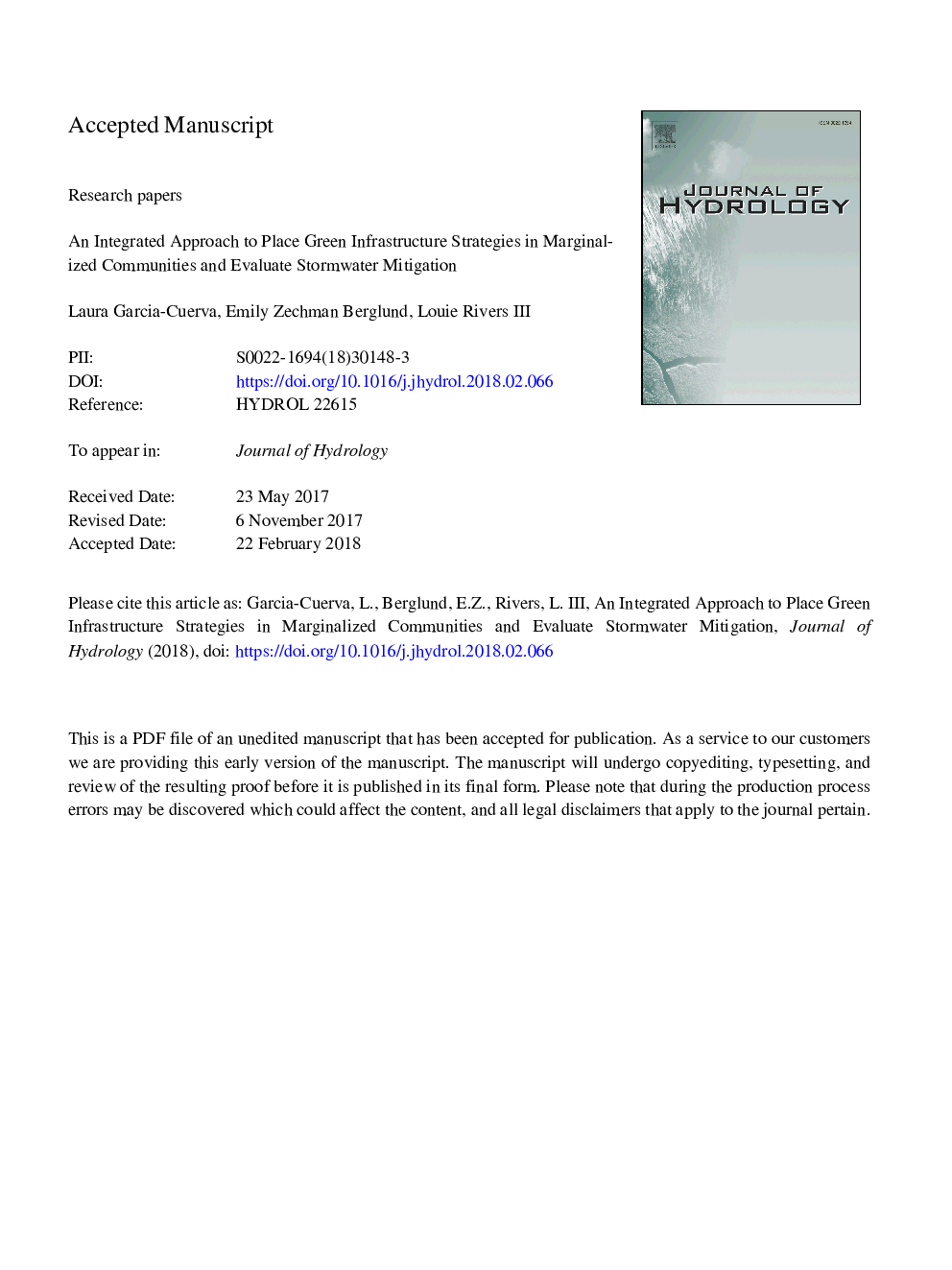| کد مقاله | کد نشریه | سال انتشار | مقاله انگلیسی | نسخه تمام متن |
|---|---|---|---|---|
| 8894930 | 1629895 | 2018 | 50 صفحه PDF | دانلود رایگان |
عنوان انگلیسی مقاله ISI
An integrated approach to place Green Infrastructure strategies in marginalized communities and evaluate stormwater mitigation
ترجمه فارسی عنوان
یک رویکرد یکپارچه برای قرار دادن استراتژی های زیربنایی سبز در جوامع حاشیه نشین و ارزیابی ریزش آب
دانلود مقاله + سفارش ترجمه
دانلود مقاله ISI انگلیسی
رایگان برای ایرانیان
کلمات کلیدی
طوفان شهری، توسعه کم اثر، مدل هیدرولوژیکی / هیدرولیک، عدالت محیطی، سلولهای بیرون زدگی، برداشت آب باران،
موضوعات مرتبط
مهندسی و علوم پایه
علوم زمین و سیارات
فرآیندهای سطح زمین
چکیده انگلیسی
Increasing urbanization augments impervious surface area, which results in increased run off volumes and peak flows. Green Infrastructure (GI) approaches are a decentralized alternative for sustainable urban stormwater and provide an array of ecosystem services and foster community building by enhancing neighborhood aesthetics, increasing property value, and providing shared green spaces. While projects involving sustainability concepts and environmental design are favored in privileged communities, marginalized communities have historically been located in areas that suffer from environmental degradation. Underprivileged communities typically do not receive as many social and environmental services as advantaged communities. This research explores GI-based management strategies that are evaluated at the watershed scale to improve hydrological performance by mitigating storm water run off volumes and peak flows. GI deployment strategies are developed to address environmental justice issues by prioritizing placement in communities that are underprivileged and locations with high outreach potential. A hydrologic/hydraulic stormwater model is developed using the Storm Water Management Model (SWMM 5.1) to simulate the impacts of alternative management strategies. Management scenarios include the implementation of rain water harvesting in private households, the decentralized implementation of bioretention cells in private households, the centralized implementation of bioretention cells in municipally owned vacant land, and combinations of those strategies. Realities of implementing GI on private and public lands are taken into account to simulate various levels of coverage and routing for bioretention cell scenarios. The effects of these strategies are measured by the volumetric reduction of run off and reduction in peak flow; social benefits are not evaluated. This approach is applied in an underprivileged community within the Walnut Creek Watershed in Raleigh, North Carolina.
ناشر
Database: Elsevier - ScienceDirect (ساینس دایرکت)
Journal: Journal of Hydrology - Volume 559, April 2018, Pages 648-660
Journal: Journal of Hydrology - Volume 559, April 2018, Pages 648-660
نویسندگان
Laura Garcia-Cuerva, Emily Zechman Berglund, Louie III,
